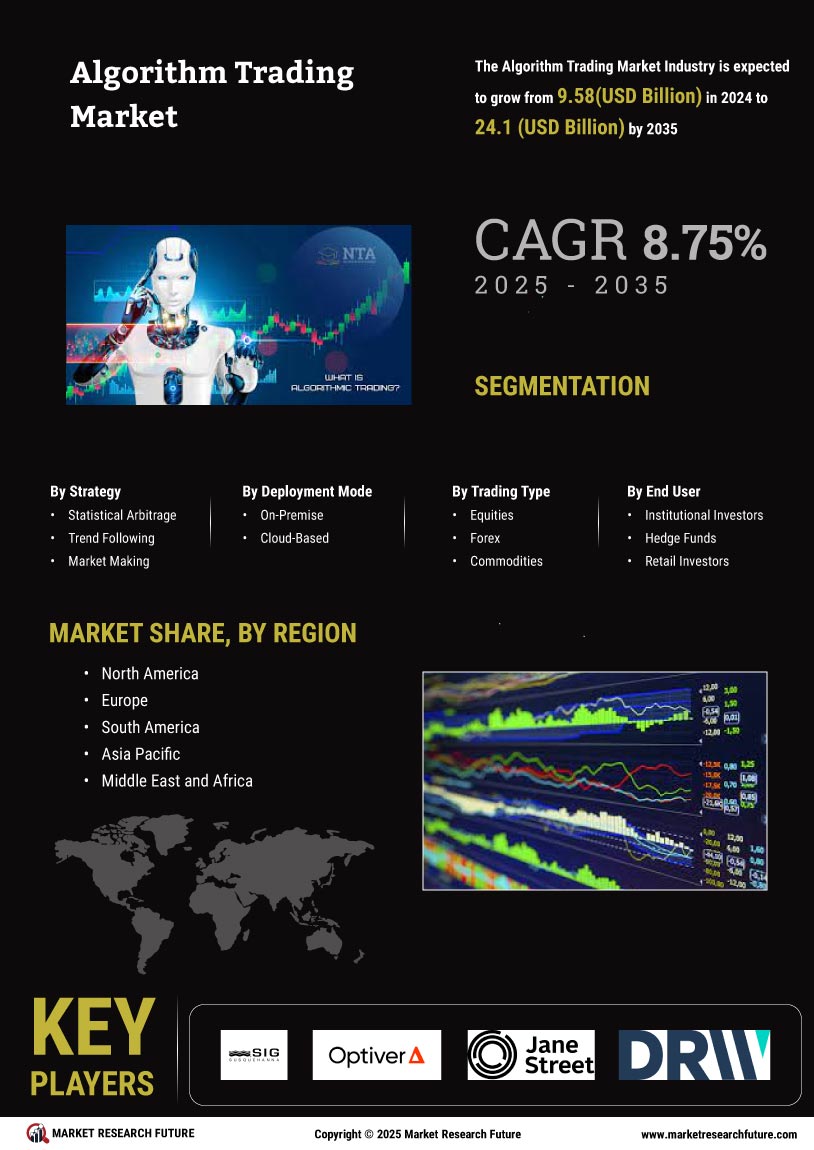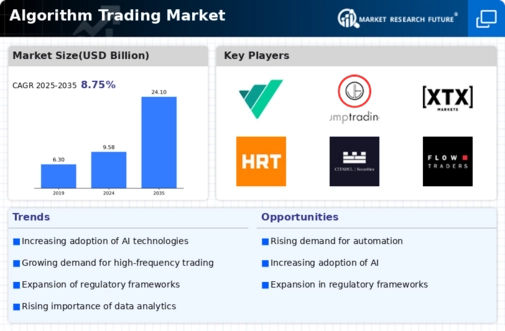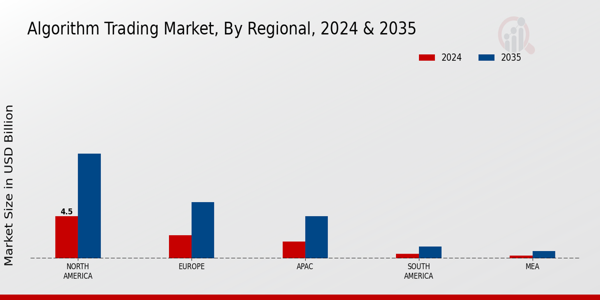The Algorithm Trading Market is characterized by its dynamic and rapidly evolving landscape, driven by advancements in technology, increased market liquidity, and a growing demand for efficient trade execution. As financial markets continue to grow in complexity, algorithmic trading has emerged as a vital tool for institutional investors and hedge funds seeking to optimize their trading strategies. The competitive insights within this market reveal a landscape where firms leverage sophisticated algorithms, big data analytics, and machine learning to gain a competitive edge.
Furthermore, the market is comprised of diverse players ranging from established financial firms to innovative startups, each vying for a share by offering cutting-edge technology and strategic advantages. As the demand for automation in trading processes rises, understanding the competitive positioning of key market participants becomes essential for discerning the opportunities and challenges that lie ahead in this sector.Virtu Financial has established itself as a formidable player in the Algorithm Trading Market by utilizing its advanced trading technology and innovative approaches to market making.
The company is known for its high-frequency trading capabilities, which enable it to execute trades with remarkable speed and efficiency across various asset classes and global markets. Virtu's strengths lie in its strong partnerships with exchanges and liquidity providers, which enhance its market reach and execution capabilities. Additionally, the firm leverages proprietary algorithms that provide low-latency trading solutions, allowing it to capitalize on market opportunities effectively.
With a robust risk management framework and a focus on compliance, Virtu Financial’s operational resilience and expertise further cement its reputation in this competitive landscape.Jump Trading stands as another key player in the Algorithm Trading Market, recognized for its sophisticated quantitative trading strategies and technology infrastructure. The company excels in algorithmic trading across multiple asset classes, positioning itself as a leader in high-frequency trading and electronic market making. Jump Trading’s strengths include its investment in proprietary technology, which supports the rapid execution of trades across diverse marketplaces.
The company has a global presence, operating in multiple regions and leveraging local market insights to optimize its trading activities. In terms of mergers and acquisitions, Jump Trading has strategically sought partnerships to enhance its technological capabilities and expand its market footprint. Key products and services offered by Jump Trading include advanced trading platforms and algorithmic solutions that cater to institutional clients, ensuring that they remain competitive in a continuously evolving market environment.





















Leave a Comment